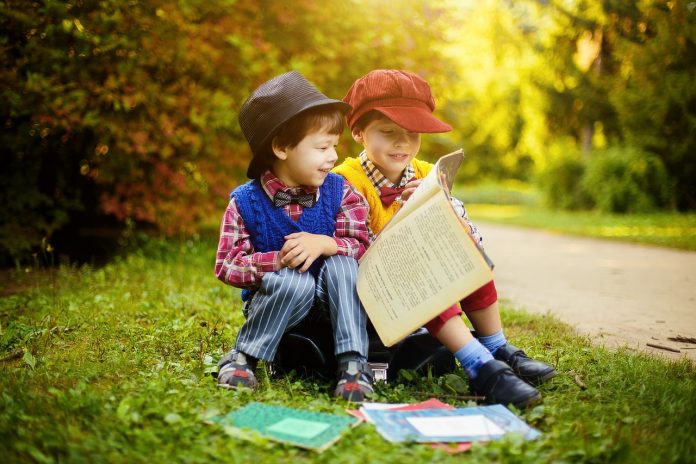
Tales and stories have entertained and educated kids for hundreds of years, but books written and published especially for kids is relatively new in the western world. Up until the Georgian period, kids were just given such reading material as ballads, religious catechism and books about how to behave. While the advent of the printing press widened the selection of books for adults, kids were left looking over their adults’ shoulders.
Then, in 1691, English philosopher John Locke came up with the great idea that children learning to read should start with some easy books with pictures… like a Aesop’s Fables. While these are still fun to read today, Locke didn’t have any other recommendations for good reads for kids of that era.
But once the 18th century rolled around, and people began to think of kids as kids, and not little adults, the genre of kids’ literature began to take shape. One of the first children’s books considered now to be modern, was published by UK author John Newbery. He published a book called “A Little Pretty Pocket-Book” in 1744, which is has been called the “first modern children’s book.” What makes this book remarkable was that it was kid-sized, meant for children’s hands, and it had a brightly colored cover that appealed to kids. This was new. (If Newbery’s name sounds familiar, it’s because in 1922 the John Newbery Medal was created in his honor, for the “most distinguished contribution to American literature for children.”)
Other important names in the early development of children’s literature are Hans Christian Andersen, the Danish author and poet in the early 19th century, who wrote such fairy tales as “The Little Mermaid,” “The Snow Queen,” and “Thumbelina.” Also during this period, the Brothers Grimm were at work preserving traditional German tales (sometimes rather gruesomely), such as “Hansel and Gretel,” “Snow White,” and “The Frog Prince.”
However, it was Lewis Carroll’s “Alice’s Adventures in Wonderland,” published 1865 that heralded a change in writing style for kids, from a preachy, teaching one, to an imaginative one. “Alice” is considered to be the first “English masterpiece written for children.”
And so, it was in the late 19th century, the golden age of children’s literature that many of the kids’ books we now consider classics were published. This list includes “Pinocchio,” Robert Louis Stevenson’s “Treasure Island” and “Kidnapped,” Rudyard Kipling’s “The Jungle Book,” J.M. Barrie’s “Peter Pan,” and in North America, “Little Women,” and Mark Twain’s stories, to name but a few.









